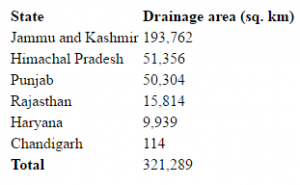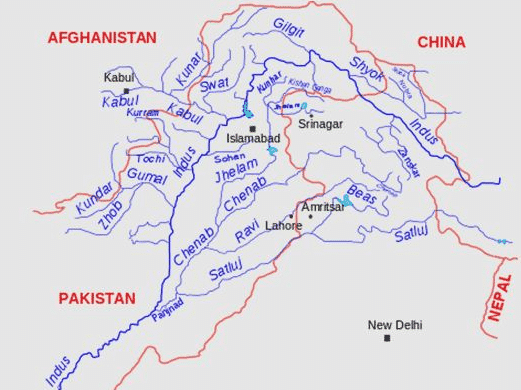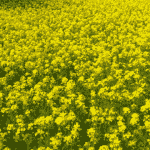The Indus River System ( Lake Mansarovar→ J&K→Pakistan)
- It rises in Tibet near Lake Mansarovar/ Mapam.
- Flowing West, it enters India in the Ladakh district of Jammu & Kashmir.
- Several tributaries like, the Zaskar, the Nubra, the Shyok, and the Hunza, join it in the Kashmir region.
- The Indus flows through Baltistan and Gilgit and emerges from the mountains at Attock.
- The Satluj, the Beas, the Ravi, the Chenab and the Jhelum join together to enter the Indus near Mithankot in Pakistan.
- Beyond this, the Indus flows southwards eventually reaching the Arabian Sea.
- The Indus Water Treaty was signed in Karachi in in 1960
- According to the Treaty:
- The Indus system of rivers comprises three Eastern Rivers (Ravi, Beas and Satluj and their tributaries) and three Western Rivers ( Indus, Jhelum and Chenab and their tributaries).
- The waters of Eastern Rivers are allocated to India. India is under obligation to let flow the waters of the Western Rivers to Pakistan except for the following uses: Domestic Use; Non- Consumptive use; Agricultural use as specified; Generation of hydro-electric power as specified.
Effectively, we can use these Western Rivers but cannot divert them. India can use only 20 percent of the total water carried by the Indus River System.
Tributaries
- Zaskar
- Shyok ( rises from Siachen Glacier)
- Suru – It is an obsequent tributary. It originates from Deosai Mountain and is in the Kargil district.
- Hunza
- Gilgit – It is the last tributary of Indus in India. Now Indus enters Pakistan.
- Jhelum ( J&K→ Pakistan)– Srinagar is located on it. River Kishenganga joins it from right side at the India-Pakistan border. Jhelum enters Pakistan near Baramulla.
- Chenab – Himachal Pradesh→ J&K→ Pakistan)
- Ravi (Himachal Pradesh→ Punjab→ Pakistan)– Its source is near Rohtang Pass in Himachal Pradesh between Pirpanjal and Dhauladhar range.
- Beas (Himachal Pradesh→ Punjab)– It lies entirely in India and meets Satluj in Punjab (Harike). Kullu is located on Parbati, which is a tributary of Beas.
- Satluj (Lake Mansarovar→ Himachal Pradesh→ Punjab→ Pakistan)– It originates from Lake Mansaorvar and enters India through the Shipki la Pass. River Spiti is one of its tributaries.
- The statewise distribution of the drainage area is given below:

Read More: The Indian River System











